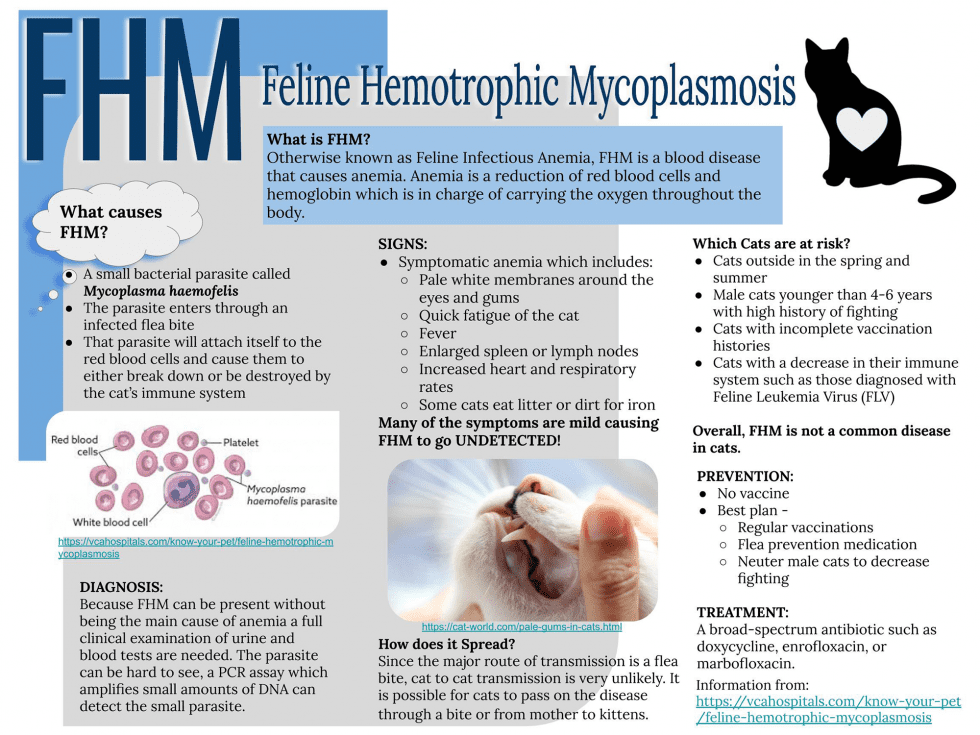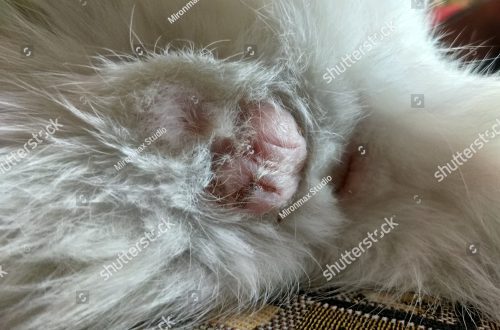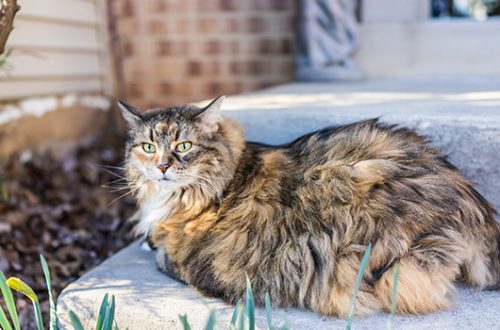
Mikoplasmoz nan chat: sentòm, tretman ak prevansyon
Mycoplasmosis often becomes an unpleasant surprise for kitten owners, especially when it reaches an advanced stage. Hill’s veterinarians tell you how to help your pet – and not get sick yourself.
Kòz
Mycoplasmosis is an infectious disease. For cats, its pathogens are the bacteria M. gatae and M. felis. With active reproduction in the animal’s body, they negatively affect the respiratory and excretory organs, joints, bone tissue and eye membranes.
Mycoplasmas are resistant to antibiotics, but they quickly die in water, air and soil. The probability of catching the disease on the street for a cat is extremely small – infection almost always comes from a sick animal. Regardless of whether mycoplasmosis is transmitted to a cat sexually, by airborne droplets or in utero, it poses a serious threat to her health.
Most often, kittens and young cats under 2 years of age suffer from mycoplasmosis. Elderly animals, carriers of chronic diseases and weakened immunity are also at risk. The sudden activity of peacefully sleeping mycoplasmas in the body can also be caused by severe stress associated with a change of scenery, a visit to a clinic, or the appearance of another pet in the house.
Sentòm yo
The main insidiousness of this disease is the unpredictable nature of the course. The first symptoms of mycoplasmosis in a cat may appear as early as three days after infection, or may be invisible for more than a month. Therefore, it is worth going to the veterinary clinic immediately if the following signs are detected:
letaji, somnolans;
refusal to eat, nausea;
etènye ak touse;
ogmantasyon tanperati;
inflammation of the eyes, increased tearing.
At this stage, the disease can be successfully treated. But if mycoplasmas are allowed to multiply further, they will begin to destroy the body’s systems – and the symptoms will become more frightening:
lameness, swelling of the paws, difficulty with movement;
aggression, avoidance of touch;
impaired urination;
hair loss, skin ulcers;
enflamasyon nan gangliyon lenfatik yo;
purulent discharge from the eyes.
The acute form of the disease in cats often presents with conjunctivitis, rhinitis, and fever. If treatment is not started at this stage, mycoplasmosis can lead to pneumonia, arthritis, infertility, and even death.
Mycoplasmosis is difficult to diagnose on its own due to its similarity with the common cold and other pathologies. After detecting alarming symptoms, the cat must be shown to the veterinarian.
Dyagnostik ak tretman
After an external examination of the pet, the veterinarian may prescribe one or more studies:
advanced blood test (clinical and biochemical);
PCR (highly sensitive method for the detection of microorganisms);
taking swabs from mucous membranes (depending on the affected area – nose, eyes, oral cavity or genital organs. Including swabs or aspirates from the trachea; bacteriological analysis of urine (determination of sensitivity to antibiotics).
If a blood test reveals anemia (decrease in hemoglobin and red blood cells), and ELISA or PCR determine the type of pathogen, the diagnosis is considered confirmed. Treatment of mycoplasmosis in cats consists of the following steps:
terapi antibyotik appointed individually according to the results of the analyzes; with the effective action of the drug, improvement occurs within 3-5 days;
terapi antretyen aimed at the treatment of concomitant pathological conditions;
restoration of mucous membranes consists in their washing and treatment with specialized ointments;
strengthening of immunity achieved with the help of drugs and vitamins;
swen nan kay means peace, a soft sunbed and free access to fresh water.
During the course of treatment, you should not take your pet in your arms unless absolutely necessary. Mycoplamosis can affect the joints and bones – careless movement can cause severe pain to the cat. Therefore, bathing and combing is also prohibited.
Prevansyon
For a person
It is unlikely that feline mycoplasmosis is transmitted to humans. The fact is that cats carry strains of mycoplasmas gatae and felis, and a hominis strain is dangerous for humans. Nevertheless, veterinarians recommend not to contact with the mucous membranes of a sick animal (do not kiss, do not feed from your hands), and after cleaning the tray or bowl, treat your hands with an antiseptic.
For pet
There is no vaccine against mycoplasmosis, but routine vaccinations against other infectious diseases can significantly alleviate its course. Strong immunity will help the cat to restrain the growth of mycoplasmas even in case of infection. Therefore, do not forget about the general rules of prevention:
evite kontak ak bèt ki pèdi;
check the medical documents of partners for mating;
regularly visit a veterinarian;
follow the schedule of vaccinations and antiparasitic treatments;
keep the tray, bowl, and sleeping area clean;
choose a complete and balanced diet that contains in the optimal amount all the nutrients necessary for a pet.
Take care of yourself and your loved onesбимцев!





